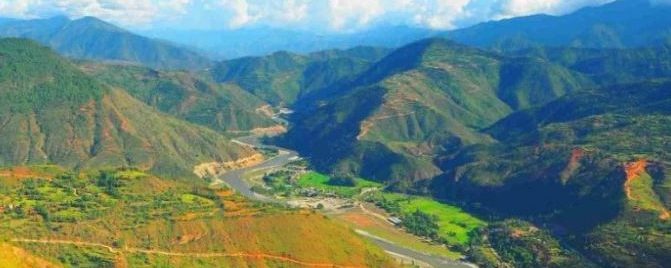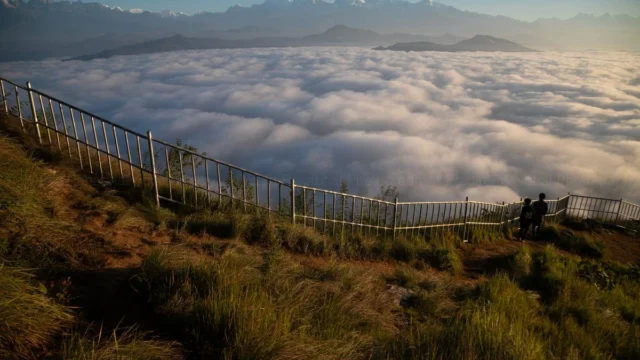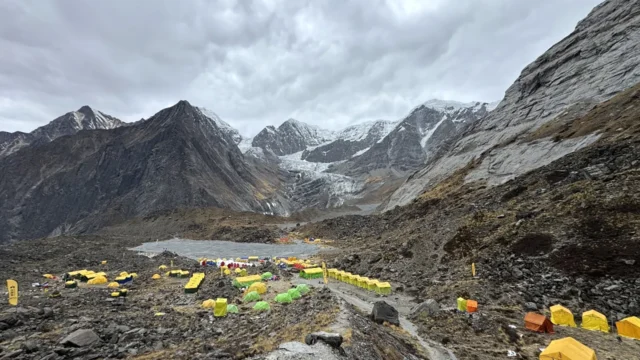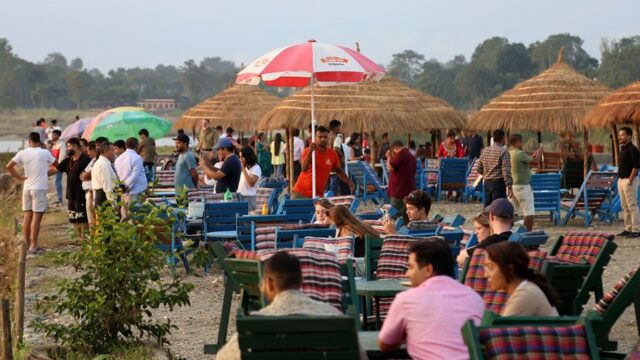The historical and religious site of Majhuwaagadhi, a popular destination for both pilgrimage and tourism, is facing growing concerns over recent development activities. Located about a 45-minute walk uphill from the main commercial center of Diktel Bazaar, Majhuwaagadhi is home to several significant sites including the Kirat historical site, the Buddhist cave of Budheshwar, and the Kali Ka Bhagwati Temple.
Majhuwaagadhi is surrounded by lush greenery and is a favored spot for picnics, educational tours, and cultural events. Historically, it was the site of King Ranveer Hang’s rule until 1804 BS (Bikram Sambat). The northern part of Majhuwaagadhi features an ancient site where explosives and weapons were once made, while the eastern section includes areas such as Phoolpati Danda, Ranga Aahal, and Damaha Dunga. The central part of the site contains a structure known as “Mauli,” historically used for keeping sacrificial animals during festivals.
Despite its rich historical and cultural heritage, Majhuwaagadhi has seen a rise in physical infrastructure development, which has led to criticism from local residents and heritage advocates. Recent projects, including the construction of a concrete tower near the Budheshwar cave funded by a combination of local and provincial government resources, have sparked controversy. Critics argue that such developments are compromising the site’s natural beauty and cultural integrity.
The project, which involves a budget of NPR 9.66 million out of a total NPR 13.68 million allocated for the development, was contracted to be completed by April 2024. However, concerns have been raised that the new structures, including a view tower, are obstructing traditional views and detracting from the site’s natural and cultural appeal.
Rajyu Lyalu, former president of the District Chamber of Commerce, has criticized the local government for investing in unproductive infrastructure rather than preserving the site’s historical value. He contends that the construction of concrete structures, including the new tower, is detrimental to the site’s heritage and does not contribute to tourism promotion as intended.
In response, Diktel’s Mayor, Tirtharaj Bhattarai, defended the development, stating that the new infrastructure is aimed at enhancing tourism and boosting the local economy. He argued that the construction of facilities such as the tower is meant to attract tourists and increase revenue for the municipality, despite the concerns raised by critics.
The ongoing development at Majhuwaagadhi highlights a broader debate between preserving cultural heritage and pursuing economic growth through tourism infrastructure. Local residents and heritage advocates continue to urge for a more sensitive approach to development, emphasizing the need to balance modernization with the preservation of historical and natural resources.






